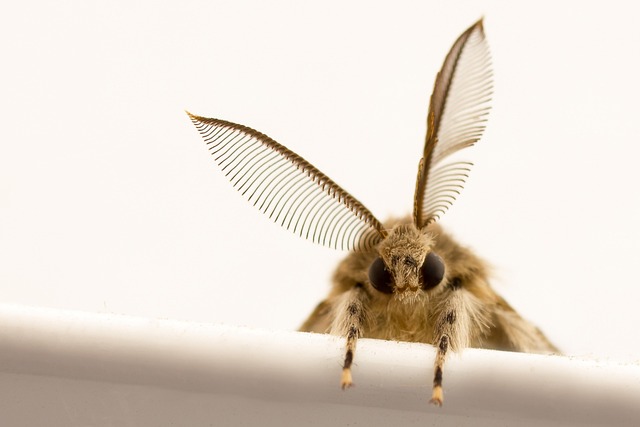Clothes moths cause extensive fabric damage, requiring early detection through regular checks for holes or silken threads. Customized moth control plans involve professional inspections, tailored treatments, sealing entry points, and post-treatment monitoring to eliminate and prevent infestations. Natural methods use essential oils while chemical treatments like pyrethrins offer swift results; combining both in customized plans offers a balanced solution. Long-term prevention includes sealing entry points, regular cleaning, storing clothes in airtight containers, using natural deterrents, and monitoring for early infestation signs.
“Discover effective treatments for clothes moth infestations, a common yet frustrating issue that plagues many home owners. This comprehensive guide explores tailored solutions through ‘customized moth control plans,’ offering a step-by-step approach to eradication. We compare natural and chemical methods, helping you make informed choices. Additionally, learn preventative measures to safeguard your closet from future invasions. Get ready to reclaim your space, free from these pesky intruders.”
Understanding Clothes Moth Infestations: Signs and Causes
Clothes moths are tiny insects that can cause significant damage to fabrics, leading to costly repairs or even total destruction of garments. Understanding their behavior and signs of infestation is crucial for effective prevention and treatment. These moths are attracted to items made from natural fibers like wool, silk, cotton, and fur, making your wardrobe a potential haven for them.
Infestations often go unnoticed until the damage becomes severe, with visible holes or patches in clothing. Adult moths typically lay eggs on fabric surfaces, and the larvae feed on these materials once hatched. They prefer dark, undisturbed areas within closets, attics, or storage spaces. Regularly checking for signs like tiny holes, webbing, or a characteristic silken thread, especially in susceptible items, can help identify an early infestation. Customized moth control plans, including professional inspections and targeted treatments, are essential to effectively addressing and preventing these persistent pests from damaging your valuable fabrics.
Customized Moth Control Plans: A Step-by-Step Guide
Dealing with a clothes moth infestation can be daunting, but tailored solutions offer hope. Customized moth control plans provide a systematic approach to eradicating these pests effectively. The first step involves identifying the type of moths infesting your space, as different species have varying habits and preferences. Next, professionals assess the severity of the infestation and the affected items, enabling them to determine the most suitable treatment methods.
These plans often include multiple strategies, such as thorough cleaning, launderings in hot water, and the use of moth-repellent products. Sealing entry points and maintaining excellent air circulation further disrupts moth habitats. Regular monitoring post-treatment is crucial to ensuring the infestation’s complete elimination and preventing future recurrences.
Natural and Chemical Treatment Options Compared
When it comes to eliminating clothes moth infestations, there are two primary approaches: natural and chemical treatments. Natural methods often involve using essential oils, lavender, cedarwood, or spice powders like cinnamon and cloves, which can deter moths naturally. These solutions are usually safer for sensitive fabrics and the environment, making them appealing for those who prioritize eco-friendly options. However, their effectiveness may vary, as moth repellence is not always guaranteed with natural substances.
On the other hand, chemical treatments offer more direct and powerful solutions. Products containing pyrethrins or synthetic pyrethroids are commonly used, providing fast results in targeting and eliminating moths. These chemicals are highly effective but should be handled with care due to potential health and environmental concerns. Customized moth control plans that combine natural deterrents and chemical treatments can offer the best of both worlds, addressing infestations thoroughly while minimizing risks.
Preventive Measures: Safeguarding Your Closet Long-Term
To safeguard your closet from clothes moths in the long term, consider implementing a customized moth control plan. This involves identifying and addressing potential entry points, such as gaps around doors or windows, where moths can infiltrate. Regularly cleaning and vacuuming, especially in dark, cluttered areas, is key to removing larvae and silk fibers that moths feed on.
Storing garments in airtight containers when not in use can significantly reduce the risk of infestation. Additionally, using natural repellents like lavender, cedarwood, or mothballs can provide an extra layer of protection. Customized moth control plans also include monitoring for any signs of infestation early on and taking prompt action to prevent moths from laying eggs and reproducing, ensuring your closet remains free from these persistent pests.
In addressing clothes moth infestations, understanding the problem and implementing tailored solutions are key. Our article has guided you through recognizing signs and causes, developing customized moth control plans, comparing treatment options, and taking preventive measures. By combining natural remedies and targeted chemical applications, along with long-term safeguarding strategies, you can effectively eliminate infestations and protect your wardrobe from these pesky pests.
